Explore Fashion Trends and Styles with LoomWears
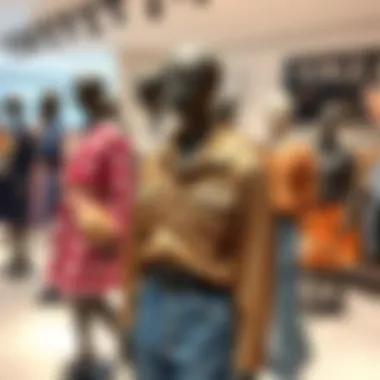
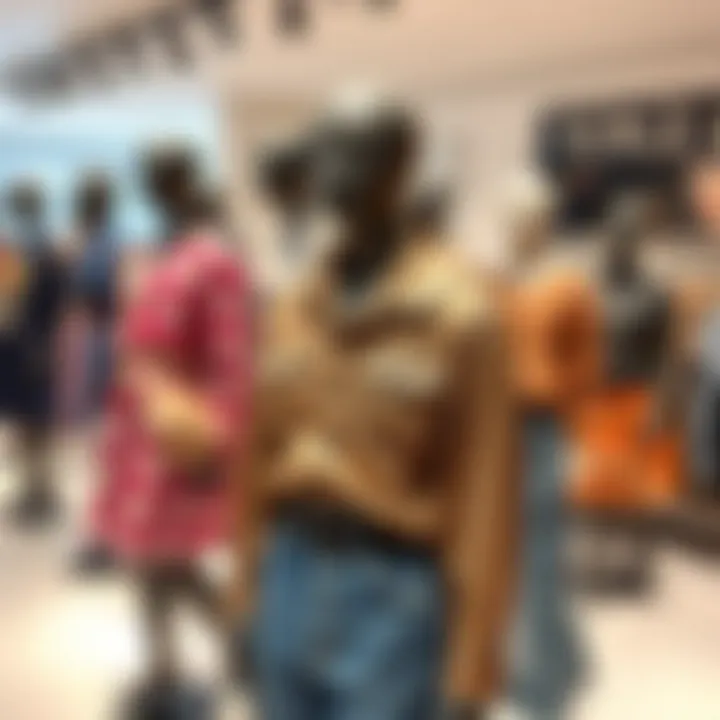
Intro
Fashion isn’t just about clothing; it’s a reflection of culture, identity, and even ambition. Today, we're diving into the fabric of trends, essentials, and practices, illuminating the path with insights from LoomWears. This guide aims to take you on a journey through the current landscape of fashion, where each stitch and thread tells a story. Whether you’re a designer sketching new ideas or a style-savvy student eager to learn more about the industry, this article should provide a robust foundation.
LoomWears stands out as a unique platform not just to showcase trends but to dissect them. With an emphasis on sustainable practices and the cultural ramifications of fashion choices, LoomWears aims to elevate your understanding of the current sartorial scene.
Now, it’s time to get into the nitty-gritty of what makes fashion tick in today’s whirlwind world.
Understanding the Modern Fashion Landscape
The landscape of fashion today is a complex web of influences and evolving norms. Understanding this environment is critical, not only for fashionistas but also for designers, stylists, and students who wish to make a mark in this ever-changing industry. It encompasses the current trends, the impact of technology, and the dynamic relationship between various cultural contexts and individual expression. When we dive deep into this topic, we discover several key elements that shape the fashion world today:
- Cultural Relevance: Fashion reflects societal values, beliefs, and shifts. It is a mirror that showcases how culture influences lifestyle choices.
- Consumer Dynamics: As consumers become more informed and discerning, their purchasing habits change, leading to a demand for authenticity and personalization in fashion.
- Technological Innovation: The fashion industry is increasingly integrating technology, from online shopping platforms to virtual fashion shows, which have reshaped how we experience and engage with fashion.
- Sustainability Issues: As the world becomes more aware of environmental issues, sustainable practices are now not just a trend but a necessity across the industry. Designers need to consider not only aesthetics but also materials and ethical implications behind production.
With these dimensions in mind, let's explore further into each critical aspect of today’s fashion landscape.
Exploring Seasonal Trends
The topic of seasonal trends in fashion is not just a matter of style; it balances on the interplay between changing weather, consumer behavior, and cultural events. As seasons transition, so does the wardrobe that reflects the spirit of that time. Understanding these shifts creates a layered approach to fashion, allowing designers, stylists, and fashion enthusiasts to make informed choices about what to wear or create.
Exploring trends seasonally offers several benefits. Firstly, it reflects the rhythmic cycle of nature; fashion, like the seasons, has its ebbs and flows. By noting these changes, one can enhance their wardrobe strategically, investing in pieces that blend seasonal appropriateness with timeless style. Seasonal awareness also helps in minimizing unnecessary purchases while maximizing use of the existing wardrobe.
From the transition of light jackets in spring to heavier coats in winter, the changes invite exploration into various textures, colors, and styles. This flexibility means incorporating the latest trends while simultaneously adapting to individual preferences and lifestyles, ultimately leading to a more personalized fashion experience.
Spring Fashion: A Breath of Fresh Air
Spring is often viewed as the refreshing start to the year. The approach of warmer weather and budding flowers translates into fashion, where lighter fabrics and vibrant colors reign. This season serves two purposes: shedding layers from winter and embracing renewed energy. Floral patterns and pastel shades often dominate the spring collections, symbolizing growth and new beginnings.
When selecting spring garments, consider:
- Layering Options: While temperatures rise, spring can still surprise with chilly evenings. Opt for lightweight cardigans or trench coats to layer effectively.
- Comfort and Breathability: Fabrics like cotton and linen allow for breeziness while ensuring comfort. They absorb moisture well, keeping one cool as the sun shines.
- Versatility: Pieces that can be dressed up or down are ideal. A sundress can transition from a day at the park to a night out with the right accessories.
"Spring clothing reflects the season's optimism, offering wearers a chance to express blossoming creativity through bold color choices and fun silhouettes."
Summer Style: Comfort Meets Trendiness
As the temperature climbs, so does the desire for comfort without compromising style. Summer demands breathable materials and relaxed fits. Think of airy fabrics, light textures, and bold prints that mirror the lively atmosphere of summer activities.
Key aspects to keep in mind for summer styles include:
- Lightweight Silhouettes: Flowy dresses, loose-fit shorts, and relaxed shirts are vital. The goal is to feel unrestricted and effortlessly chic.
- Color Palette: Bright colors and prints are all the rage, from tropical motifs to beachy hues. These choices bring excitement and reflect the vivacious nature of summer.
- Footwear Choices: Opt for comfortable sandals or stylish espadrilles that allow for movement without compromising style.
Autumn Attire: Embracing Layers and Textures
Autumn brings a beautiful transformation of colors both in nature and in fashion. It's the time to embrace layers, textures, and deeper tones. This season often signifies the transition from lighter summer clothing to cozier, more textured pieces. Rich hues like burnt orange, deep burgundy, and earthy greens encapsulate the warmth of the season.
Key considerations for dressing well in autumn include:
- Layering Techniques: This season is all about layering—maximize versatility with sweaters, scarves, and jackets. Using varied lengths and textures keeps a look fresh and inviting.
- Texture Play: Combine wool, knit, denim, and leather for a mixed-fabric look. This adds depth and interest to any outfit, balancing comfort with style.
- Footwear Transition: Ankle boots and closed-toe shoes become essential, providing both comfort and a polished look.
Winter Wardrobes: Functional Yet Fashionable
Winter challenges wardrobes to maintain warmth while still focusing on style. This season is characterized by thicker fabrics, insulation, and thoughtful layering strategies. It’s about mastering the balance between functionality and aesthetic appeal. Warmth should not come at the expense of fashion; thus, this is the perfect time to invest in classic outerwear.
In preparing for winter, consider:
- Quality Outerwear: A well-fitted, stylish coat is paramount. Opt for materials like wool or down that provide insulation without compromising on design.
- Knitwear and Base Layers: Sweaters and turtlenecks are essentials that can be layered seamlessly under coats. They add style and warmth when temperatures drop significantly.
- Accessory Importance: Hats, gloves, and scarves not only keep you warm but also provide an opportunity to showcase personal style through colors and patterns.
Overall, seasonal fashion trends offer a dynamic perspective on dressing that evolves with the climate and personal expression. By staying abreast of the seasonal shifts, one can thoughtfully curate a wardrobe that marries comfort, practicality, and style, ultimately leading to a fulfilling fashion experience.
The Art of Building a Versatile Wardrobe
In today’s fast-paced fashion world, the ability to build a versatile wardrobe is akin to having a toolbox filled with the right instruments for any occasion. A well-constructed wardrobe can offer not just aesthetic appeal, but functionality in a myriad of settings. In this article, we will explore the complexities and essentials of assembling a collection that works for you, ensuring that you feel at ease and confident no matter where life takes you.
Identifying Essential Pieces
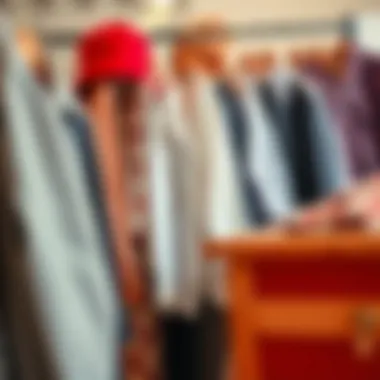
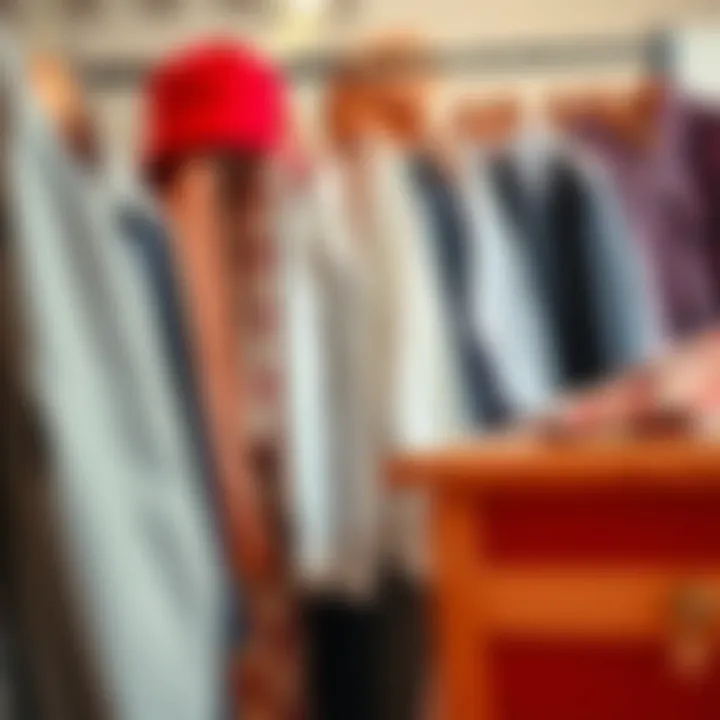
The cornerstone of any versatile wardrobe rests on fundamental pieces that can be mixed, matched, and layered seamlessly. Start by thinking about staples—items that won’t go out of style with the change of a season. Consider classic denim jeans, tailored blazers, and simple white tees. These items are the backbone of your wardrobe and can adapt to diverse settings.
To identify these essential pieces, focus on:
- Timelessness: Look for design elements that are ageless. A little black dress or a crisp white shirt should be present.
- Quality over Quantity: Invest in fewer, high-quality pieces that will endure over time rather than a multitude of cheap items that wear out quickly.
- Neutral Colors: Opt for a color palette that’s easy to coordinate. Shades like black, navy, gray, and beige can serve as a canvas.
By prioritizing these essentials, you ensure that your wardrobe not only looks sharp but also caters to your lifestyle needs.
The Role of Accessories
Accessories can be transformative, elevating even the simplest outfit into something striking. They provide the opportunity to express individual style without overhauling your entire wardrobe. A well-chosen accessory can pull together your look, making it polished and intentional.
Key accessories to consider include:
- Scarves: Versatile and available in numerous fabrics and patterns, scarves can add warmth in winter or style in summer.
- Statement Jewelry: A bold necklace or pair of earrings can turn heads and provide a splash of personality.
- Footwear: The right shoes can change the entire tone of your outfit, from casual to professional to festive.
When selecting accessories, aim for those that not only enhance your outfit but also reflect your unique style. This is where personal expression shines through, complementing the foundational pieces in your wardrobe.
Mixing and Matching: A Guide
Mixing and matching is where creativity meets practicality. The goal here is to utilize your essentials and accessories to create unique ensembles that can suit various occasions without requiring a closet overhaul.
Consider these strategies for effective mixing and matching:
- Layering: Master the art of layering; a camisole under a blazer or a button-up shirt can add depth to any outfit.
- Prints and Patterns: When combining prints, it's better to choose complementary colors. For instance, pairing a striped shirt with floral pants can be delightful if the colors harmonize.
- Seasonal Adaptation: Dress up your summer clothes with tights and jackets in winter or downplay heavy fabrics for summer outings.
By mastering the art of mixing and matching, you can wear an outfit seemingly an infinite number of ways. This approach not only maximizes your wardrobe but also enhances your style versatility.
"A versatile wardrobe reflects not just fashion sense, but also an understanding of self and occasion. It’s a personal signature that can adapt without losing essence."
Styling Tips for Different Occasions
In the world of fashion, knowing how to dress appropriately for various occasions is just as vital as selecting the right fabrics or keeping up with trends. The way you present yourself can convey a message before you even utter a word. Fashion serves not just as an art form, but also as a way to communicate who you are in a particular context. Picking the right ensemble for social gatherings, work meetings, or formal events can bolster confidence and impact how others perceive you.
The significance of mastering styling tips for different occasions cannot be overstated. It empowers individuals to navigate the nuances of social settings while expressing their personal style. Whether you are a seasoned fashionista or someone just stepping into the realm of styling, understanding what to wear when can greatly enhance your wardrobe journey.
Everyday Casual: Comfort Meets Style
When it comes to everyday wear, the principle of comfort coupled with stylish presentation takes center stage. Casual attire is frequently seen as a reflection of one's lifestyle and personal preferences. For instance, you might find that a classic pair of well-fitted jeans can adapt to various situations - from running errands to grabbing coffee with friends. Pairing them with a soft, oversized sweater can elevate your look without sacrificing comfort.
In this realm, accessories play an essential role. A wristwatch or a simple necklace can add that needed touch without overwhelming the ensemble. Here are a few pointers to keep in mind for everyday casual:
- Layering is Key: A light jacket or cardigan can be a game-changer as temperatures fluctuate throughout the day.
- Footwear Matters: Sneakers offer comfort, but don’t overlook stylish loafers or ankle boots; they provide a versatile alternative.
- Mix and Match: Don’t hesitate to combine patterns, such as stripes with florals, to express your individuality.
"Comfort can coexist with style; it's all about how you present it."
Business Attire: Striking the Right Balance
Business attire can be a tricky balancing act between professionalism and personal expression. It’s about fitting into the corporate environment while still feeling authentic to who you are. In many cases, a tailored blazer paired with chic trousers or a pencil skirt works wonders, showcasing a polished look without going overboard.
When navigating the business landscape, consider the following:
- Color Choices: Neutral colors such as navy, grey, and black are safe bets, but don't shy away from subtle hues or patterns to showcase personality.
- Fabric Selection: Wool blends or high-quality cotton can elevate the entire outfit, making it look refined and intentional.
- Accessories: Simple jewelry and structured bags can enhance your overall look without detracting from its professionalism.
Being well-dressed for the office cultivates a positive impression and reinforces authority.
Formal Events: Elegance Defined
Attending a formal event often necessitates a more refined approach to fashion. Here, elegance is not merely a choice, but an expectation. Understanding the specific dress code—whether black-tie, cocktail, or semi-formal—can prep you for the occasion. For women, a classic evening gown or a sophisticated cocktail dress often fits the bill. Men might opt for a tuxedo or a well-fitted suit, coupled with slick shoes for that touch of polish.
Here are some important elements to consider:
- Fit is Everything: Clothes should fit well without being either too tight or too loose. A skilled tailor can make all the difference.
- Attention to Detail: Small elements, like an elegant clutch or simple cufflinks, complete the outfit.
- Grooming Matters: Personal grooming should be part of the package. A well-groomed appearance speaks volumes about how you regard the event and the people at it.
In formal settings, the aim is to blend sophistication with your own signature flair, leaving a lasting impression as you make your entrance—and exit.
Having a good grasp of styling various outfits for different occasions not only boosts your confidence but also ensures that you embody the spirit of each event. With LoomWears as your guide, stepping out in style is now more accessible than ever.


Cultural Significance of Clothing
Clothing is more than just fabric draped over our bodies; it encapsulates humans' cultural narratives and identities. Every piece tells a story, often echoing long-held traditions, prevailing social mores, and evolving perceptions. In this section, we delve into the vital role clothing plays within society, not only as functional attire but as a revered form of expression and connection.
Fashion Icons Through History
When one reflects on fashion, figures like Coco Chanel, Alexander McQueen, and even the humble yet iconic denim jacket come to mind. These icons didn’t simply design clothing; they challenged norms and reshaped societies' perceptions of beauty, gender, and self-expression.
Coco Chanel revolutionized women’s fashion, introducing elements that blended style with comfort, which was not common in her time. In her famous words:
"Fashion fades, only style remains the same." This statement shows her belief in the power of style to transcend temporary trends. The influence of icons like Chanel illustrates the ongoing dialogue between clothing and culture, revealing how attire can symbolize shifts in societal roles, such as women’s liberation.
- Alexander McQueen: Not just a designer, he made bold statements through his art, daring to tackle issues like consumerism and the fragility of life through his dramatic runway shows.
- Madonna: In the '80s and '90s, she blurred the lines between fashion and music, creating a cultural revolution that reflects how clothing choices can navigate social currents.
These figures show how clothing in itself tells societal stories, reflecting evolving tastes, aspirations, and rebellious spirits.
Clothing as a Form of Expression
Many believe that clothing serves as a second skin, a canvas where we paint our personalities. The ability to choose what we wear empowers individuals to express their identities. An outfit can communicate a person's mood, status, or even belief system without needing words.
Consider the impact of streetwear in urban culture. Brands like Supreme and Off-White serve not just as clothing labels but as statements about status, exclusivity, and belonging. In many ways, a T-shirt and a pair of sneakers can say more about a person's tastes than any monologue.
- Personal Identity: Clothing allows individuals to showcase their backgrounds, interests, and even values. For instance, the rise of gender-neutral fashion encourages conversations around identity and expression by breaking away from traditional gendered clothing.
- Cultural Heritage: Ethnic attire, like kimonos or saris, can hold deep cultural meanings, allowing individuals to connect with their backgrounds and pass down histories to new generations.
- Political Statements: Fashion can be a silent protest. Consider the pink hats worn during women's marches; these simple pieces rallied millions around a common cause, demonstrating how attire can facilitate dialogue.
Global Fashion Trends and Their Origins
Understanding where fashion trends come from can open doors to insights about global societies. Footwear as simple as flip-flops traces its roots back to ancient Egypt, while high fashion is often inspired by traditional dress from numerous cultures worldwide. Trends aren't created in a vacuum. They spring from a mix of local narratives, traditions, economic landscapes, and social movements.
- Africa’s Ankara: Bright and colorful, this fabric has gained international acclaim, merging traditional artisanship with modern designs.
- Japanese Street Fashion: Tokyo’s eclectic style has fascinated the global fashion audience, often mixing vintage apparel with avant-garde designers, challenging perceptions of aesthetic norms.
- Mayan Textiles and Patterns: These intricate designs tell stories of identity and history, showcasing how local artistry and culture can create profound impacts globally.
In summary, the cultural significance of clothing is vast and layered. It serves as a tool for self-expression, a mirror reflecting historical shifts, and a bridge connecting varied traditions. In understanding these elements, one not only appreciates fashion as a profession but also as a vibrantly cultural undertaking that shapes our world.
For those curious about the depths of fashion culture and its dynamic evolution, resources such as Britannica.com and Wikipedia provide comprehensive insights into these subjects. Meanwhile, ongoing discussions on platforms like Reddit can offer real-time perspectives and community voices on current trends and their implications.
Material Choices: The Foundation of Fashion
When diving into the world of fashion, the significance of material choices cannot be overstated. Fabrics do far more than just cover the body; they echo culture, convey emotions, and set the tone for individuality. The underpinnings of any fashion statement hinge on the materials selected. From the soft drapes of silk to the rugged resilience of denim, these choices dictate not only aesthetics but also functionality, durability, and sustainability.
In this article, we'll unpack how different fabrics shape the industry and why understanding these materials is crucial for aspiring designers, professional stylists, and fashion students alike.
Understanding Fabrics and Their Uses
Fabrics can be likened to a painter's palette; each textile brings its own hue, texture, and personality to the table. For instance, cotton, with its breathability, is a summer staple, while wool’s warmth makes it a go-to in the colder months. Polyester—a versatile synthetic—might be a boon for swimwear due to its quick-dry properties.
- Natural Fibers:
- Synthetic Fibers:
- Cotton (breathable, soft)
- Linen (light, great for hot weather)
- Wool (insulating, moisture-wicking)
- Polyester (durable, wrinkle-resistant)
- Nylon (strong, smooth)
- Spandex (elastic, form-fitting)
Understanding these materials not only enhances the design process but also influences consumer choices. This is where knowledge translates into practical application, making the difference between a mediocre piece and a runway-worthy garment.
"The fabric of a piece can determine its lifecycle, from production to wear, making material choices pivotal."
Eco-Friendly Materials: The Future of Fashion
Today, the fashion industry stands at a crossroads, balancing innovation with the urgent need for sustainability. Eco-friendly materials present a pathway towards a less wasteful future. Designers are increasingly turning to fabrics derived from organic sources or recycled materials. Examples include organic cotton, Tencel, and recycled polyester, which significantly reduce negative environmental impact.
As consumer awareness grows, the demand for sustainable options is skyrocketing. Designers and brands must invest time and resources to research and incorporate eco-friendly materials into their collections. This aspect of fashion could very well determine a brand’s legacy moving forward.
Some emerging eco-friendly materials include:
- Bamboo Fabric: Naturally antibacterial and biodegradable
- Hemp: Requires less water and chemicals to grow and produces durable fibers
- Recycled Textiles: Repurposing materials that might otherwise go to waste
Research from the Ellen MacArthur Foundation suggests that shifting to circular-economy materials is not just beneficial but necessary for the health of our planet.
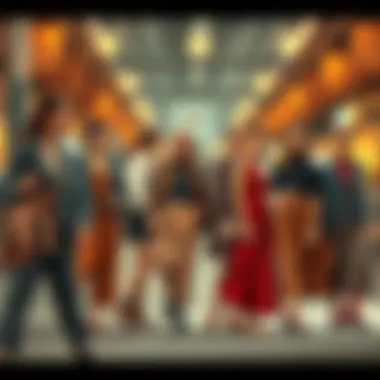
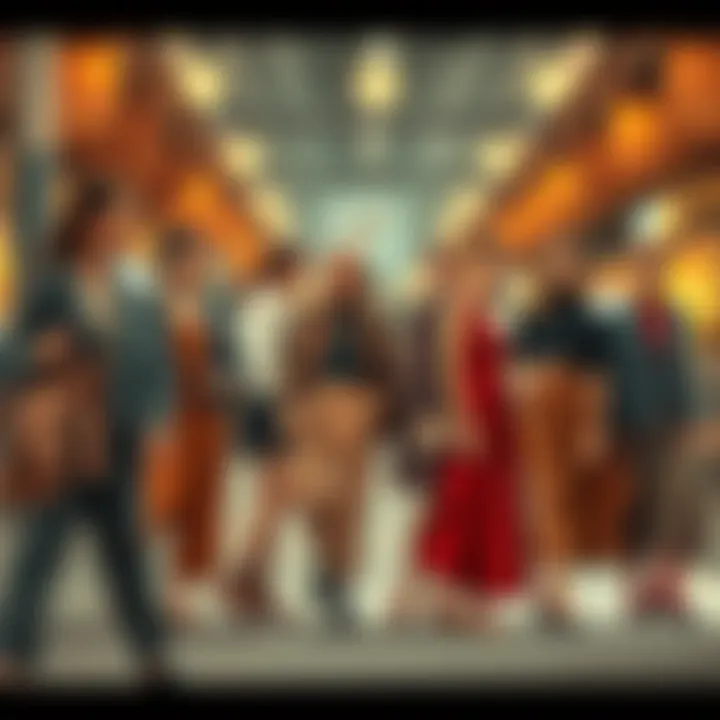
Staying Comfortable: The Science of Fabric
Comfort in fashion is often overlooked, but it is a key consideration in the design process. The science behind fabrics affects both the wearer's experience and the garment's performance. Technical advancements in fabric technology have birthed materials that wick moisture, provide UV protection, and even regulate body temperature.
For example, breathable mesh fabrics are now trendy in athletic wear, offering both functionality and style. Think about how specific fabrics are tailor-made for certain functions—even beyond fashion, such as medical textiles that improve treatment outcomes.
This science can be critically examined through:
- Moisture Management: Fabrics like Coolmax and Dryfit keep skin dry
- Thermoregulation: Fabrics that adapt to body heat, like Polartec
- Comfort Fit: Stretch materials like elastane that allow for a full range of motion
Understanding the science of fabric can empower designers to create garments that not only look good but also enhance the experience of wearing them. This is where form truly meets function.
By exploring these facets of material choices, one can appreciate the pivotal role they play in shaping fashion and propelling industry innovation. LoomWears guides you through this intricate tapestry, helping you make informed decisions wherever your fashion journey takes you.
Navigating Fashion Industry Challenges
As the fashion industry evolves, it's essential for designers, stylists, and fashion enthusiasts to grasp the challenges it faces today. These obstacles span from environmental concerns to technological shifts and economic variables. Understanding these challenges not only equips industry players with the knowledge to innovate but also fosters a more conscious and adaptable fashion community. LoomWears aims to shine a light on these vital issues, driving discussions that push for more sustainable and innovative practices.
Sustainability vs. Fast Fashion
One of the most pressing challenges in the fashion industry is the contentious battle between sustainability and fast fashion. Fast fashion, although it offers the latest trends at remarkably low prices, comes at a dire cost. It often results in significant waste and environmental degradation. Brands like Zara and H&M emphasize quick production cycles, flooding stores with merchandise that can become obsolete in weeks.
On the other hand, sustainability advocates argue for a paradigm shift—where quality and eco-friendly practices take precedence over quantity. Investing in sustainable brands like Patagonia or Everlane demonstrates a commitment to ethical fashion. Creating durable products made from organic materials helps to reduce landfill contributions and fosters a more responsible consumer culture.
Here's a closer look at each side:
- Fast Fashion:
- Sustainable Fashion:
- Mass production at low costs
- Rapidly changing trends
- Environmental concerns due to waste
- Ethical sourcing and production
- Higher quality, longer-lasting items
- Reduced carbon footprint
"The path to sustainable fashion is fraught with challenges but is imperative for the future survival of our planet."
Adapting to Technology in Fashion
Technology is reshaping the fashion landscape, influencing everything from design to marketing. While some traditionalists might see technology as a threat, it actually presents numerous opportunities for growth and innovation. The rise of virtual reality and augmented reality is revolutionizing how customers experience fashion. Brands like Gucci and Burberry are leveraging these technologies to create immersive shopping experiences.
Moreover, artificial intelligence is streamlining design processes and predicting trends with remarkable accuracy. Tools like Adobe's Creative Cloud not only enhance design capabilities but also allow for better collaboration among diverse teams. The integration of technology facilitates more efficient supply chains, enabling brands to respond faster to market demands.
Let’s consider some key tech trends impacting fashion:
- AI-Driven Analytics: Helps in understanding consumer behavior and predicting trends.
- Augmented and Virtual Reality: Enhances online shopping experiences.
- Sustainable Tech: Innovations like 3D printing and digital fabrications reduce waste.
The Impact of Economic Fluctuations
Economic conditions significantly affect the fashion industry. Recession periods lead to cautious consumer spending, causing brands to re-evaluate their pricing strategies. The COVID-19 pandemic is a perfect example, illuminating how quickly consumer habits can shift. During uncertain times, many individuals prioritize essentials over luxury, which can force fast fashion giants to pivot.
Graduating from traditional retail to e-commerce is also a way brands can adjust their strategies. Increasing online presence can help brands endure economic slumps as e-commerce often sees less fluctuation.
Key considerations regarding the economic impact include:
- Consumer Spending Habits: Trends are often influenced by financial strain or economic booms.
- Market Adaptability: Brands that can pivot quickly may weather economic storms better.
- Global Supply Chains: Changes in tariffs and trade policies can impact costs and profits.
Ending: The Future of Fashion
As the fabric of our society continues to evolve, fashion must adapt accordingly. This article underscores the need for a sharper focus on the future of fashion through a multitude of lenses, from sustainability and innovation to the pivotal role that consumers play in shaping trends.
Embracing Change and Innovation
In today’s fast-paced world, the phrase ‘adapt or perish’ never rang truer. Fashion is confronted with unprecedented challenges and opportunities brought forth by technological advancements and shifting consumer preferences. For instance, consider the rise of 3D printing in fashion. This technique allows designers to create garments with complex structures and patterns that traditional methods can’t replicate. It also reduces waste during production, aligning creativity with eco-consciousness.
Moreover, virtual and augmented reality are changing how consumers experience fashion. Shoppers can now try outfits without even stepping into a store, enhancing convenience and reducing the environmental impact of returns. AI-driven fashion forecasting tools are also enabling brands to predict trends in real-time, minimizing overproduction and better catering to consumers' changing tastes.
It’s clear that embracing change is not merely optional but vital for survival. Brands that cling to outdated practices may find themselves left in the dust. Instead, the focus should be on harnessing innovation that speaks to modern values and consumer demands at the same time.
The Role of the Consumer in Shaping Trends
In today’s fashion ecosystem, consumers wield considerable influence. They are not just passive recipients of trends; they actively curate and promote styles that resonate with their values and lifestyles. The rise of social media has transformed the consumer’s role, allowing them to voice their opinions directly and engage in a dialogue with brands. For instance, #SustainableFashion has become a rallying cry that many brands now respond to.
Consumers are increasingly favoring transparency and ethical practices. They demand more than just a pretty dress; they want to know how it was made and who made it. This shift has compelled brands to rethink their practices and establish more transparent supply chains. So many clothing lines now showcase their production journey on various platforms, allowing consumers to see the journey from design to retail.
"Fashion is not just about what you wear, but is increasingly about what kind of world you want to live in."







